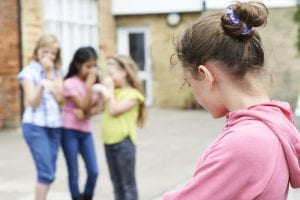Bullying in Middle School

We often hear this word being thrown around but what is bullying really? Stopbullying.gov defines bullying as unwanted, aggressive behavior among school aged children that involves a real or perceived power imbalance. The behavior is repeated, or has the potential to be repeated, over time. Both kids who are bullied and who bully others may have serious, lasting problems.
In order to be considered bullying, the behavior must be aggressive and include:
- An Imbalance of Power: Kids who bully use their power—such as physical strength, access to embarrassing information, or popularity—to control or harm others. Power imbalances can change over time and in different situations, even if they involve the same people.
- Repetition: Bullying behaviors happen more than once or have the potential to happen more than once.
Bullying includes actions such as making threats, spreading rumors, attacking someone physically or verbally, and excluding someone from a group on purpose.
There are three types of bullying:
- Verbal bullying is saying or writing mean things. Verbal bullying includes:
- Teasing
- Name-calling
- Inappropriate sexual comments
- Taunting
- Threatening to cause harm
- Social bullying, sometimes referred to as relational bullying, involves hurting someone’s reputation or relationships. Social bullying includes:
- Leaving someone out on purpose
- Telling other children not to be friends with someone
- Spreading rumors about someone
- Embarrassing someone in public
- Physical bullying involves hurting a person’s body or possessions. Physical bullying includes:
- Hitting/kicking/pinching
- Spitting
- Tripping/pushing
- Taking or breaking someone’s things
- Making mean or rude hand gestures
The most important thing we can teach our children is how to be an upstander instead of a bystander. We can do this by teaching empathy and perspective taking in daily situations. Help your child practice seeing all sides of a situation or disagreement by making talking out other perspectives, views, and opinions; even if they do not align with your own. If your child is being bullied it is important to help give the child choose to problem, solve conflict instead of immediately going and fighting the battle for them. In the long run giving our kids the tools to be assertive and confront hard situations will lead to empowerment. However, if the situation is severe, harmful, or life threatening it is always important that an adult step in and take immediate action.
